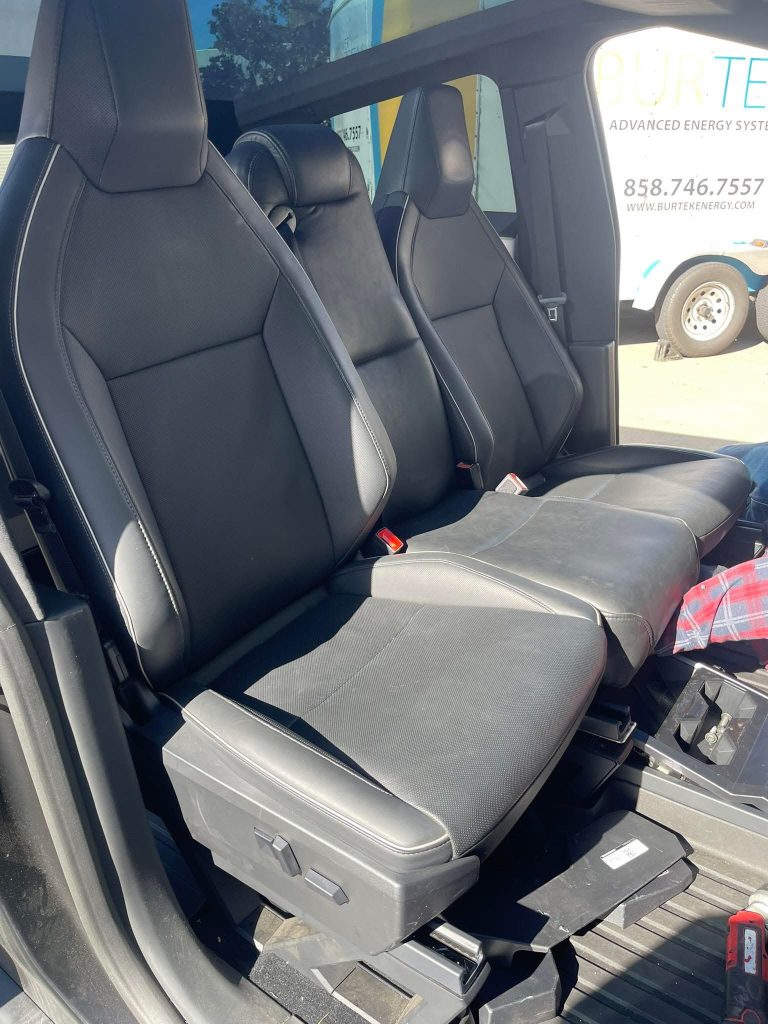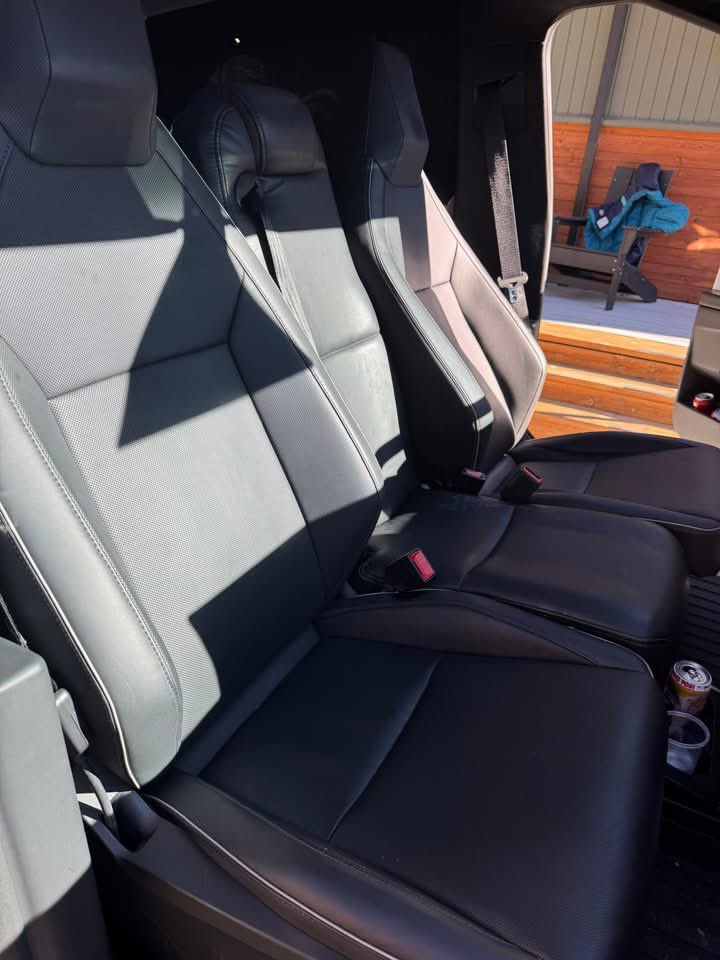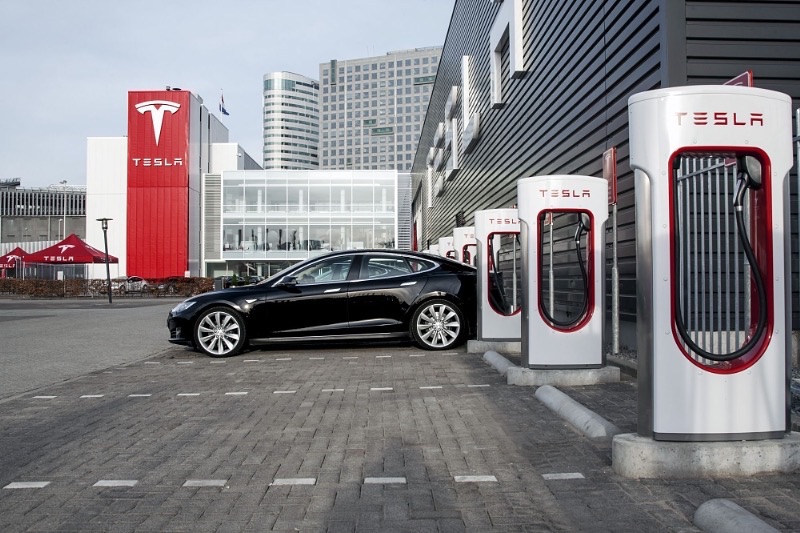

News
Tesla taxi service in Netherlands wins fight for free, unlimited Supercharger use
A taxi driver in the Netherlands who pilots one of Tesla’s all-electric vehicles scored a significant victory on Friday over the commercial use of Tesla’s charging stations including its high-powered Supercharger network.
A civil service judge from the Court of Amsterdam ruled in favor of a claimant who filed suit against Tesla Motors Netherlands BV, stating that the self-employed taxi driver for Schipoltaxi must be allowed the free and unlimited use of Tesla’s chargers, including usage of the often congested Supercharger station at the company’s Amsterdam location.
“Car manufacturer Tesla must allow a taxi driver unlimited and free of charge to use his super-fast charging stations, also at the Amsterdam Zuidoost location,” reads the ruling.
According to the (translated) court statement, the claimant purchased a Tesla Model S with 85 kWh battery in 2014, with the mutual understanding between Tesla and the buyer that the vehicle would be used as a taxi service. The claimant states, “At the time of the conclusion of our (purchase) agreement, it was expressly agreed at the time that I would be allowed to use all supercharges from Tesla in the world free of charge and without any restrictions. At the time of the conclusion of our agreement, it was entirely clear to Tesla that the vehicle purchased by me would be used as a taxi.”
The claimant brought forth a passage from Tesla’s website, which at the time indicated that buyers of a Model S or Model X before January 31, 2018, would have free, unlimited Supercharging that’s also transferable when the vehicle was sold. In their suit against the California-based electric carmaker, the claimant cited an email that was sent by Tesla that would go against the company’s messaging of free and unlimited use of Supercharging.
As read in the court statement:
In an e-mail dated 11 January 2018, Tesla informed a number of taxi drivers, including [the plaintiff], among other things:
” Increasingly, we are seeing a commercial use of the Supercharger (one of the charging stations for the Tesla, where electricity can be charged at high speed, viz.) In Amsterdam Zuidoost. This Supercharger is located at the same location as Tesla’s headquarters for Europe, also service center as well as sales location. This increasingly leads to queues for the Supercharger during peak hours and an unclear, and sometimes even dangerous (traffic) situation, for customers, employees, suppliers and other visitors. In view of (traffic) safety at this location, we reserve the right to change the access for taxis to this Supercharger in Amsterdam-Zuidoost after 31 January 2018, especially during peak hours, from 7:00 to 22 :00h, to limit. “
On the same day, [the plaintiff] protested against it by e-mail. This e-mail states, among other things:
” At the time of the conclusion of our (purchase) agreement, it was expressly agreed at the time that I would be allowed to use all supercharges from Tesla in the world free of charge and without any restrictions. At the time of the conclusion of our agreement, it was entirely clear to Tesla that the vehicle purchased by me would be used as a taxi .”
The latest ruling in favor of the Tesla taxi driver brings to light a hot topic of whether individuals and companies that have purchased a single or fleet of Tesla Model S and X, under Tesla’s narrative that buyers will have “free for life” Supercharging, can, in fact, use the vehicle(s) for commercial purposes. For the many taxi and livery services that have founded their business models largely around the financial upside of having free fuel, their livelihood depends on it. The vast majority would argue that they’re providing Tesla with free advertising to every passenger they transport, by showcasing the vehicle and benefits of driving electric to a potentially new customer.
Other Tesla taxi services like Southern California-based Tesloop, which has risen to popularity among its passengers including celebrity clientele, yet unpopular among some local Tesla owners who claim that the company is occupying much-needed Tesla Supercharger stalls, tout the benefits of being able to drive a vehicle for nearly a half million miles while having virtually no maintenance costs.
While the court ruling in the Netherlands may appear in favor of the Tesla taxi driver, you as a buyer or owner, be it for personal or commercial use, are encouraged to look at Tesla’s Supercharger policy through a wider lens. Play a part in the company’s mission to accelerate the advent of sustainable transport by bringing compelling mass market electric cars to market.

Cybertruck
Tesla Cybertruck undergoes interior mod that many owners wanted
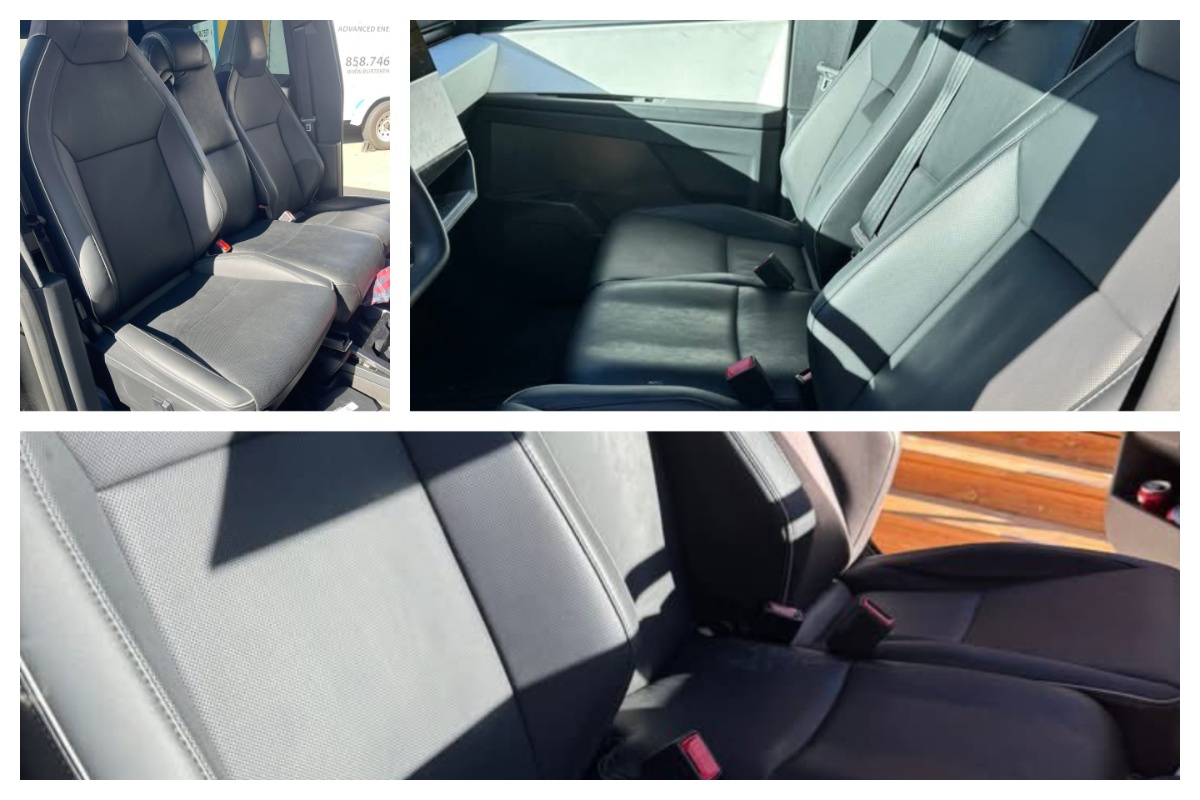
Tesla Cybertruck is significantly different from traditional pickups on the market in a lot of ways. However, one feature that was recently modified with its interior was a highly requested characteristic that is present in other trucks, but was void from Cybertruck.
Tesla went with a five-seat configuration with Cybertruck: two in the front and three in the back. The spacious interior is matched with plenty of storage, especially up front, as a pass-through, center console, and other storage options, but some Tesla fans wanted something different: bench seating.
Bench seating is popular in many full-size pickups and allows three passengers to sit up front. The middle seat is usually accompanied by a fold-down storage unit with cupholders.
Tesla decided to opt for no bench seating up front, despite the fact that it equipped bench seating in the unveiling in 2019. Interior photos from the unveiling event from nearly six-and-a-half years ago show Tesla had originally planned to have a six-seat configuration.
This was adjusted after the company refined the design:
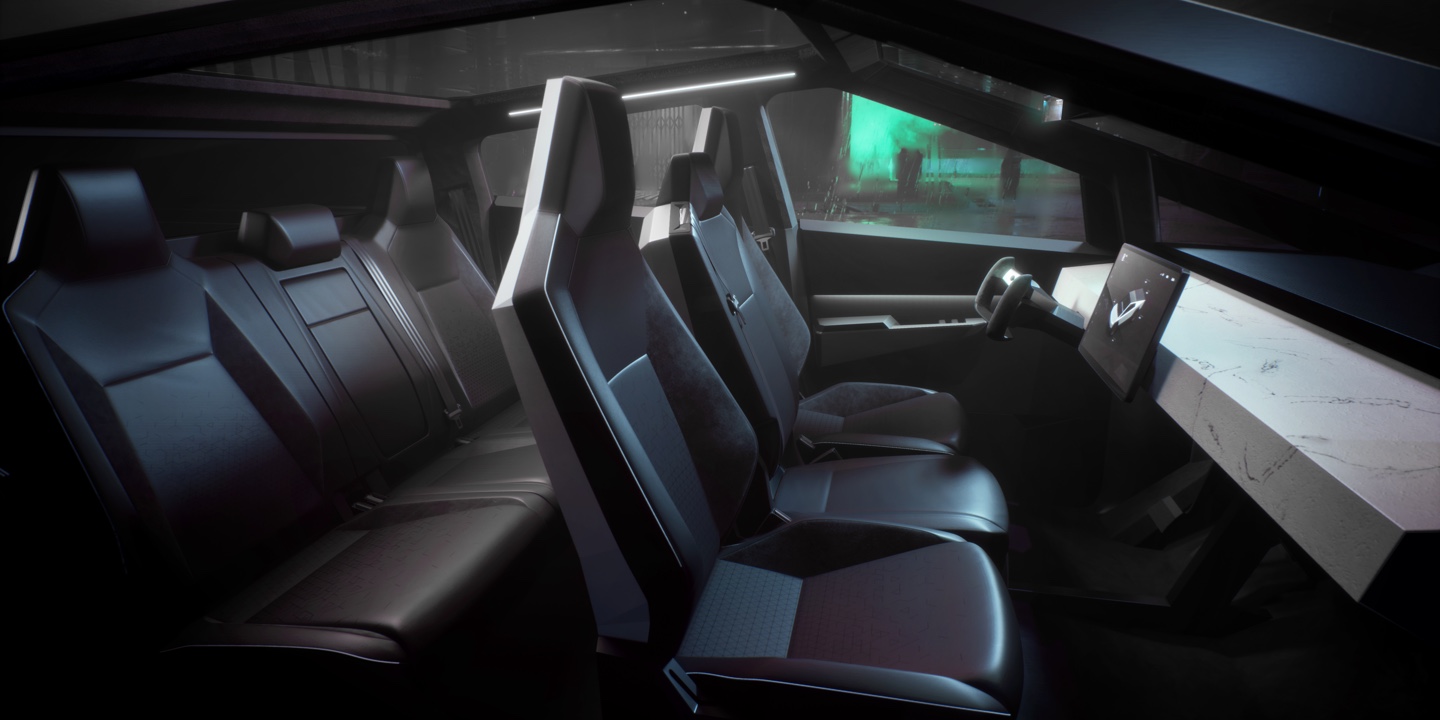
(Tesla Cybertruck interior configuration in 2019)
Despite Tesla abandoning this design, it does not mean owners were willing to accept it. One owner decided to modify their Tesla Cybertruck interior to equip that third seat between the driver’s and passenger’s thrones.
The fit is snug, and while it looks great, it is important to remember that this does not abide byregulations, as it would require an airbag to be technically legal. Please do not do this at home with your own Cybertruck:
- Credit: @blueskykites
- Credit: @blueskykites
- Credit: @blueskykites
The Cybertruck is a popular vehicle in terms of publicity, but its sales have been underwhelming since first delivered to customers back in 2023. It’s hard to believe it’s been out for two-and-a-half years, but despite this, Tesla has not been able to come through on its extensive order sheet.
This is mostly due to price, as Cybertruck was simply not as affordable as Tesla originally planned. Its three configurations were initially priced at $39,990, $49,990, and $69,990. At release, Cybertruck was priced above $100,000.
This priced out many of those who had placed orders, which is the main reason Cybertruck has not lived up to its expectations in terms of sales. The adjustments to the specific features, like the removal of the bench seat, likely did not impact sales as much as pricing did.
This modification shows some creativity by Tesla owners, but also shows that the Cybertruck could always be the subject of a potential refresh to include some of these features. Tesla routinely adjusts its vehicle designs every few years, so maybe the Cybertruck could get something like this if it chooses to refresh its all-electric pickup.
Elon Musk
Tesla CEO Elon Musk drops massive bomb about Cybercab
“And there is so much to this car that is not obvious on the surface,” Musk said.
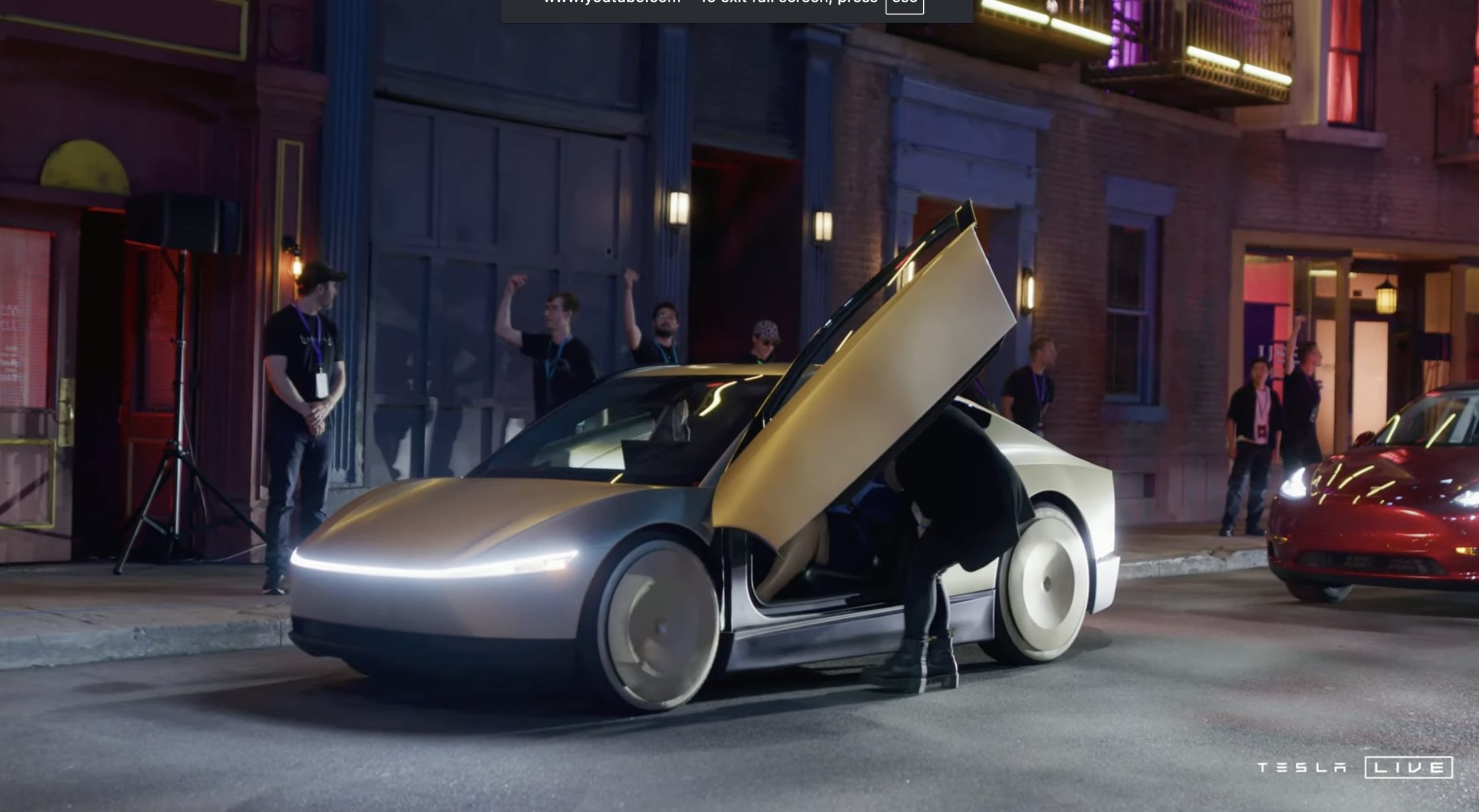
Tesla CEO Elon Musk dropped a massive bomb about the Cybercab, which is the company’s fully autonomous ride-hailing vehicle that will enter production later this year.
The Cybercab was unveiled back in October 2024 at the company’s “We, Robot” event in Los Angeles, and is among the major catalysts for the company’s growth in the coming years. It is expected to push Tesla into a major growth phase, especially as the automaker is transitioning into more of an AI and Robotics company than anything else.
The Cybercab will enable completely autonomous ride-hailing for Tesla, and although its other vehicles will also be capable of this technology, the Cybercab is slightly different. It will have no steering wheel or pedals, and will allow two occupants to travel from Point A to Point B with zero responsibilities within the car.
Tesla shares epic 2025 recap video, confirms start of Cybercab production
Details on the Cybercab are pretty face value at this point: we know Tesla is enabling 1-2 passengers to ride in it at a time, and this strategy was based on statistics that show most ride-hailing trips have no more than two occupants. It will also have in-vehicle entertainment options accessible from the center touchscreen.
It will also have wireless charging capabilities, which were displayed at “We, Robot,” and there could be more features that will be highly beneficial to riders, offering a full-fledged autonomous experience.
Musk dropped a big hint that there is much more to the Cybercab than what we know, as a post on X said that “there is so much to this car that is not obvious on the surface.”
And there is so much to this car that is not obvious on the surface
— Elon Musk (@elonmusk) January 2, 2026
As the Cybercab is expected to enter production later this year, Tesla is surely going to include a handful of things they have not yet revealed to the public.
Musk seems to be indicating that some of the features will make it even more groundbreaking, and the idea is to enable a truly autonomous experience from start to finish for riders. Everything from climate control to emergency systems, and more, should be included with the car.
It seems more likely than not that Tesla will make the Cybercab its smartest vehicle so far, as if its current lineup is not already extremely intelligent, user-friendly, and intuitive.
Investor's Corner
Tesla Q4 delivery numbers are better than they initially look: analyst
The Deepwater Asset Management Managing Partner shared his thoughts in a post on his website.

Longtime Tesla analyst and Deepwater Asset Management Managing Partner Gene Munster has shared his insights on Tesla’s Q4 2025 deliveries. As per the analyst, Tesla’s numbers are actually better than they first appear.
Munster shared his thoughts in a post on his website.
Normalized December Deliveries
Munster noted that Tesla delivered 418k vehicles in the fourth quarter of 2025, slightly below Street expectations of 420k but above the whisper number of 415k. Tesla’s reported 16% year-over-year decline, compared to +7% in September, is largely distorted by the timing of the tax credit expiration, which pulled forward demand.
“Taking a step back, we believe September deliveries pulled forward approximately 55k units that would have otherwise occurred in December or March. For simplicity, we assume the entire pull-forward impacted the December quarter. Under this assumption, September growth would have been down ~5% absent the 55k pull-forward, a Deepwater estimate tied to the credit’s expiration.
“For December deliveries to have declined ~5% year over year would imply total deliveries of roughly 470k. Subtracting the 55k units pulled into September results in an implied December delivery figure of approximately 415k. The reported 418k suggests that, when normalizing for the tax credit timing, quarter-over-quarter growth has been consistently down ~5%. Importantly, this ~5% decline represents an improvement from the ~13% declines seen in both the March and June 2025 quarters.“
Tesla’s United States market share
Munster also estimated that Q4 as a whole might very well show a notable improvement in Tesla’s market share in the United States.
“Over the past couple of years, based on data from Cox Automotive, Tesla has been losing U.S. EV market share, declining to just under 50%. Based on data for October and November, Cox estimates that total U.S. EV sales were down approximately 35%, compared to Tesla’s just reported down 16% for the full quarter. For the first two months of the quarter, Cox reported Tesla market share of roughly a 65% share, up from under 50% in the September quarter.
“While this data excludes December, the quarter as a whole is likely to show a material improvement in Tesla’s U.S. EV market share.“
